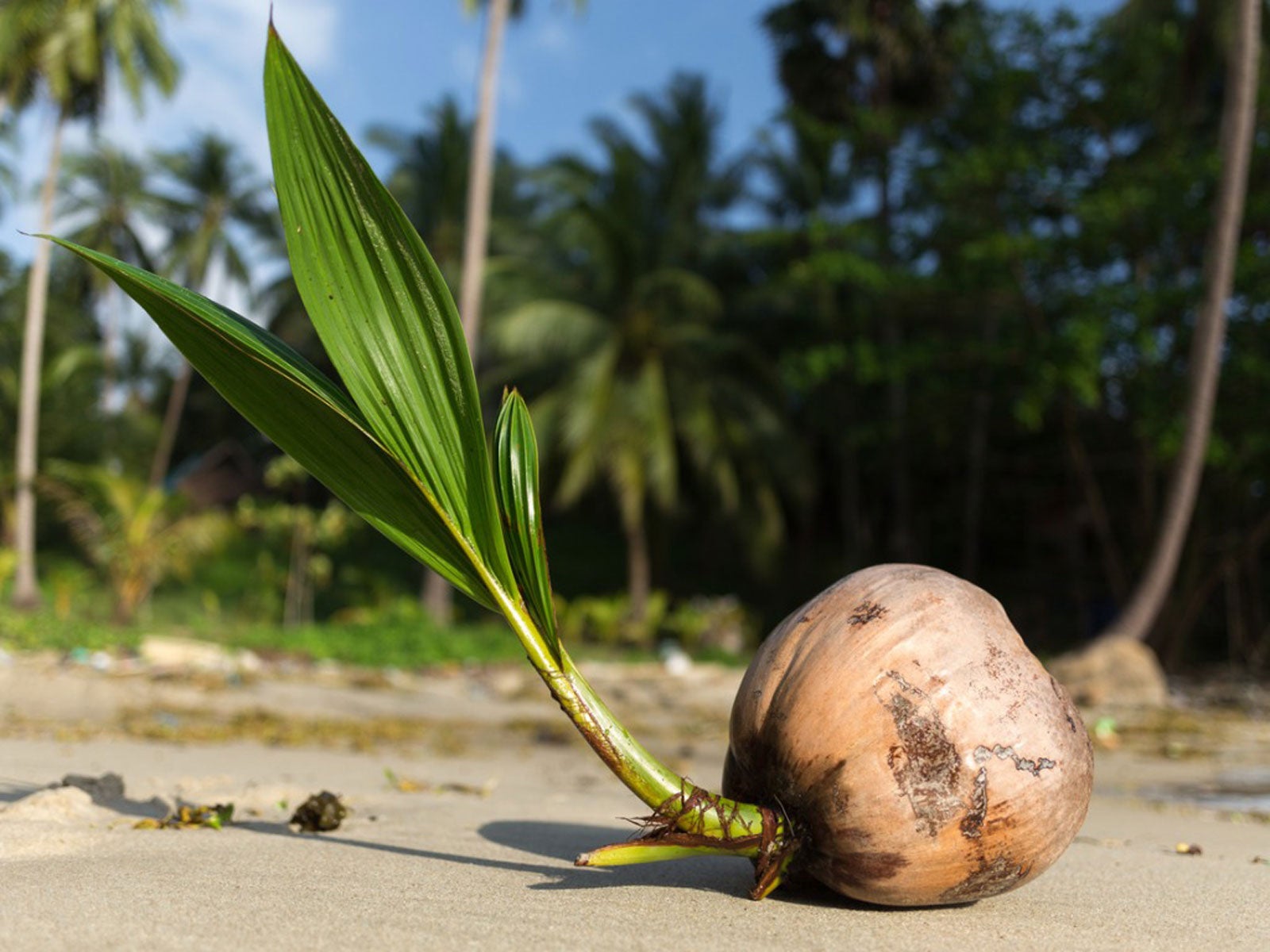Palm Tree Seed Germination: What Does A Palm Tree Seed Look Like


If you want palm trees in your backyard, growing palms from seed is your least expensive alternative. In many cases, it may be your only alternative, since palm trees grow in a way that makes it impossible to propagate them through asexual means like cutting, layering, or division.
Planting a palm tree seed is more complicated than you might think. Since it’s important to get mature seeds, plant them promptly, and have patience. Palm tree seed germination is not a matter of weeks but months or even years. Read on for more information.
What are Palm Tree Seed Pods?
When you want to start growing palms from seeds, you definitely need to obtain seeds. While you can buy them in commerce, you can also get them from the seed pods of flowering palms. Fresh seeds tend to germinate more quickly. The pods are the balls that form near the flowers and contain the palm seeds.
What does a palm tree seed look like? That entirely depends on the species of the palm. Some are small and bright red, like holly berries; others are big as bowling balls, like coconuts. You should collect seed once the fruit is 100 percent ripe or when it falls from the tree.
Palm Tree Seed Viability
It’s generally best when you are growing palms from seed to use the harvested seeds quickly. Seeds of some palms only stay viable for a few weeks, although a few can retain viability for a year or more with proper storage.
A popular test to determine if a seed is viable (and can germinate) is to drop it in a container of warm water. If it floats, don’t use it. If it sinks, it’s fine. We should note that experts find this test inexact, since, in testing, a good number of the seeds that floated will sprout just the same.
Palm Tree Seed Germination
Palm tree seed germination can take a long, long time. According to experts at the University of Nevada at Reno, most palms take 100 days or more to germinate, with an average germination rate of less than twenty percent.
Sign up for the Gardening Know How newsletter today and receive a free copy of our e-book "How to Grow Delicious Tomatoes".
Before planting a palm tree seed, you need to remove the exterior of the seed pod, scraping off the fruit, until just the seed remains. If you are only planting a small number of seeds, soak the seeds for a few days in water, then cut the fruit tissue away with a knife.
Plant each seed in a small container, covering it thinly with soil or leaving it half buried. In nature, palm seeds are dispersed by the wind and animals and germinate on top of the soil rather than being buried in the soil to grow.
Keep the pots in a warm, humid location. You can also wrap the pot in a plastic bag to hold in moisture. Keep the soil moist and wait.

Teo Spengler is a master gardener and a docent at the San Francisco Botanical Garden, where she hosts public tours. She has studied horticulture and written about nature, trees, plants, and gardening for more than two decades, following a career as an attorney and legal writer. Her extended family includes some 30 houseplants and hundreds of outdoor plants, including 250 trees, which are her main passion. Spengler currently splits her life between San Francisco and the French Basque Country, though she was raised in Alaska, giving her experience of gardening in a range of climates.